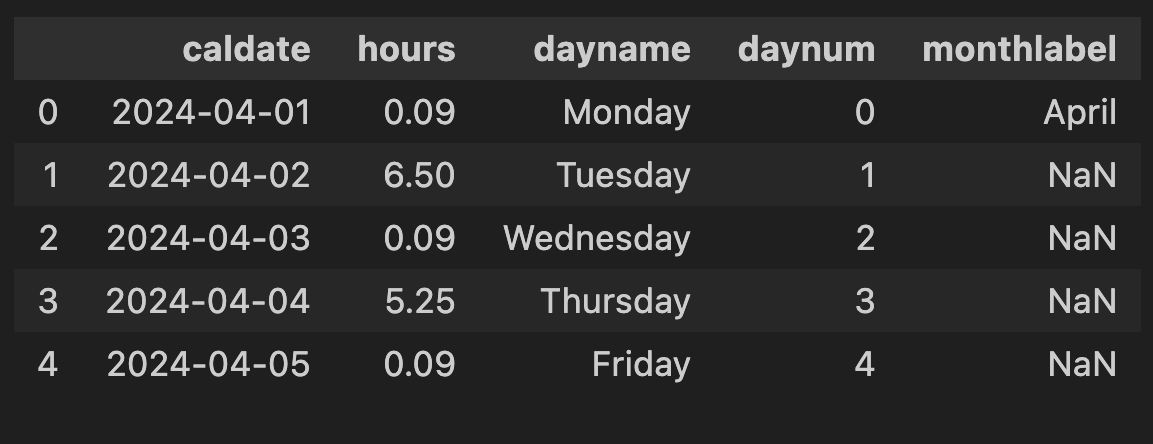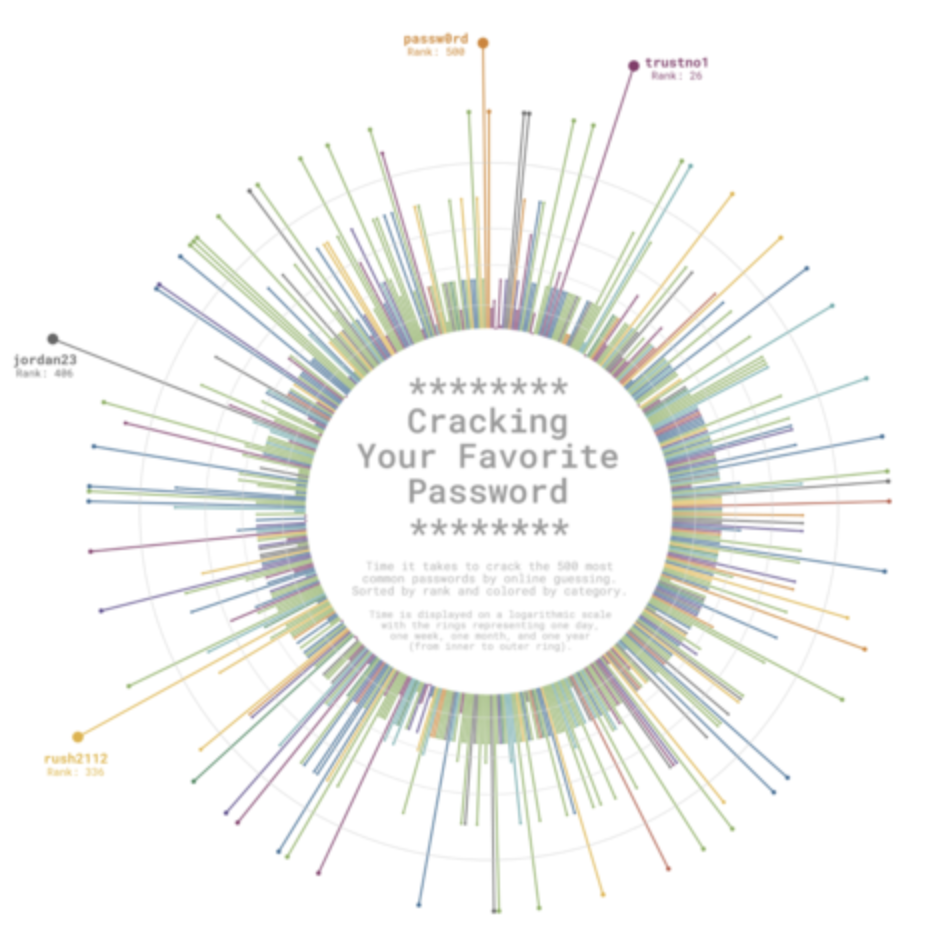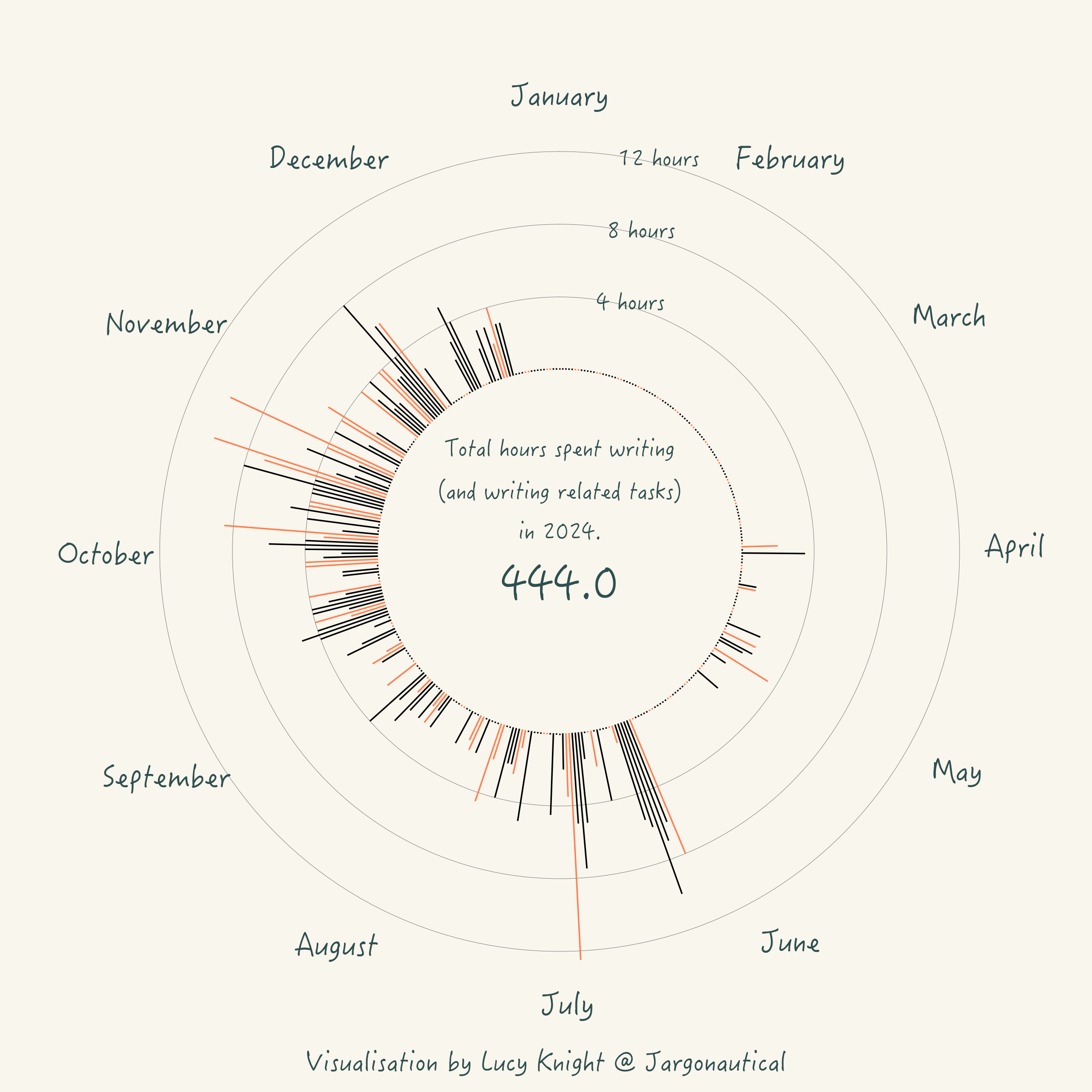Next I need to decide what questions
I'm trying to answer with this data. More specifically, what questions do I
think would be well-answered by the radial chart I'm planning to create?
Here are the obvious ones:
-
How many hours does it take to create a novel?
-
What proportion of that is writing, compared to all the other tasks?
-
Do I get more done during the week, or at weekends? What about holidays, or Christmas?
Let's start not at the beginning, but with the second question. This one
is better answered with a simple bar chart, at least to begin with.
Plotting, outlining, typesetting,
cover designs, proof-reading, uploading files, and marketing are all
part of the process if you're self-published. The bar chart to the right
shows the breakdown of total hours by category.
It is interesting to see the numbers, and there are a couple of surprises.
Drafting and editing make up the majority of the hours, as I would expect.
Marketing - which includes social media posts, designing ads, and editing
photographs - looks tiny. In fact this
is an almost daily activity, but usually only for a few minutes at a time.
If I reproduce this diagram for 2025 later on, I expect that number will be
significantly higher.
I am shocked by how little time I apparently spend outlining and plotting,
possibly something I need to address!



